Talking Capitalism With Students @ Little Wound H.S., Kyle, SD
- Sarah Stookey
- Oct 14, 2018
- 5 min read
Updated: Oct 27, 2018

On October 2nd I taught six classes at Little Wound High School in Kyle, SD. It was a full day - and gave me renewed respect for the hard work high school teachers do!

Little Wound School is one, large and imaginatively designed (lots of open gathering spaces, curved walls, cheerful colors) building that houses the high school as well as the middle and elementary school. Three meals are offered and in the dining area, by the front entrance, I was struck by how much friendly conversation there was, between students, between students, teachers and staff.
The impression of a very friendly atmosphere was confirmed when I spent time waiting near Principal Sharei Ricketts' office (below, right). The office secretary, Dawn Marie Janis (below, left), sitting near the door to a busy hallway, calmly and patiently assisted parents coming to pick kids up for appointments, kids needing a place to leave their knapsack, many phone calls...she even shared her banana bread when a student asked for some :-)
Principal Rickets gave me the opportunity to talk about capitalism in six classes. Four of them, two economics classes and two personal finance classes were taught by Leslie Cuny and she was a wonderful partner throughout the day. Leslie has a degree in business and has worked for many years in private business and in the administration of different schools on the Reservation. She was recently certified to teach in the high school. The two other classes were about tribal government, taught by James McDonald.

Working with high school students on this trip has been a great experience - and a challenge. Doing my work in a university I forget how long school days are and how early they start; I shouldn't be surprised by how difficult it is for teenagers to be awake and engaged at 8:30 in the morning - or 3:00 in the afternoon. And in every school I've been in the added distraction of cell phones has been an explicit issue. Little Wound was no exception; during the morning circle of all high school students Principal Ricketts spoke very seriously about the possibility of phones being banned from the school if students didn't respect rules against their use during class time.
In each class I start out by asking students what they think of when they hear the word "capitalism". At Little Wound the teachers had students keep the worksheets I'd handed out so I didn't see what they wrote but when we talked about it the responses were similar to what I've heard elsewhere: "money", "business", "nothing".
Then I "build" the diagram of capitalism on the board and talk about how each piece fits together (capital, profit, work, pay, democracy, etc.).

Then we talk about how things play out in practice. At Little Wound H.S. two aspects of capitalism attracted the most interest. The first involved LeBron James. He is my "go to" (mainly because he's one of the few NBA players whose name I remember and because students tend to (!) be familiar with him too) when discussing a key question of Talking Capitalism conversations: why some people earn more for their labor and other people earn less. For 2018 James earned $85.3 million from the NBA (I usually ask students to look this figure up - on their phones). I ask students why they think James earns so much. Here's the kind of (quite reasonable) thing they tend to say:
He has specialized skills
He had to train really hard
He works really hard
No one else can play like him
People really like to watch him play
Then I ask them about school bus drivers; they're a serious piece of educational infrastructure (especially in this region of long distances and harsh weather) and students have a lot of experience observing them at work. On average, nationwide, they earn $32,000 (which is, as Ms. Cuny pointed out to me later, actually a very good salary on the Reservation). When I asked students why they thought there was such a big difference in pay between James and bus drivers they said:
They're not as skilled
It's an easier job
There are more of them
Again, all good points. We had some spirited discussions about the relative importance of school bus drivers vs. NBA players (most - but not all-thought bus drivers were more important) and even the issue of which job is more difficult. I suggested - referring to the diagram, that one reason James earns so much is that the Lakers - and the companies that sponsor him, like Nike, are businesses. Students don't often think of sports teams as businesses. I point out that James' labor helps the owners of the Lakers earn profit whereas school bus drivers (if they work for public schools) don't help make profit. Then we can talk about how we measure different kinds of value: school bus drivers certainly do extremely valuable work but there isn't a profit figure attached to each school child's head. Whereas the owners of the Lakers can make a calculation of how much monetary profit having James on their team will add. I told them that a bus driver who works for Greyhound would, probably, earn significantly more than a public school bus driver for the same reason: a private company determines pay levels with an eye on profitability in a way a public organization doesn't.
The second issue that students were curious about was taxes. As part of the capitalism diagram we'd discussed how taxes pay for governmental services like education and health care (significant enterprises on the Reservation) and that formulas to determine how much taxes people and businesses pay are based on the amount of pay or amount of profit they earn. Again, taking advantage of their phones, I asked them to look up how much Amazon had paid in federal taxes in 2017. We talked about how it could be that Amazon had not paid any federal income taxes when people like me - and their teacher, Ms. Cuny - certainly had. Again, this can lead to discussions about management priorities and strategies, how money affects the political process, etc.
At the end of the day I visited Principal Ricketts to thank her for the opportunity to work with the students. She said she wished my stay could be longer. I did too. Students - and capitalism - are both similar and different in today's Lakota-centered context than they are in other school districts. I look forward to being able to return to Kyle to learn more. Thank you, very much, to all those who helped me at Little Wound High School!
VIDEO - Morning Circle - Little Wound High School, Kyle SD 10/2/18




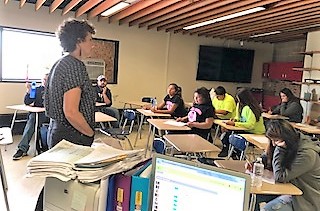
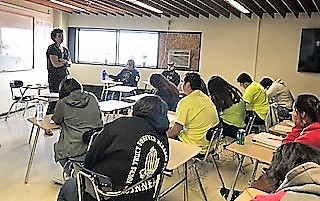
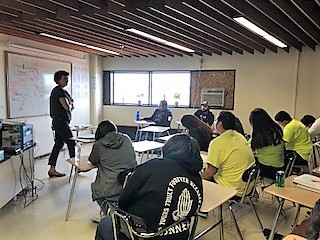
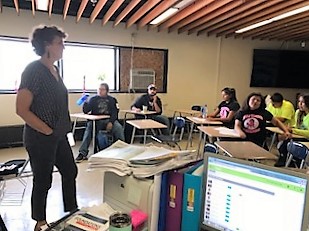
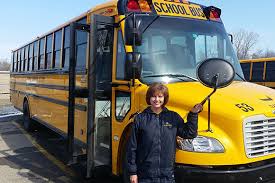


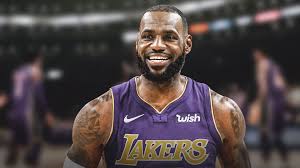



Comments